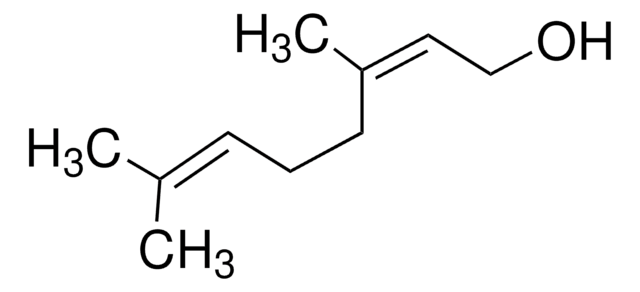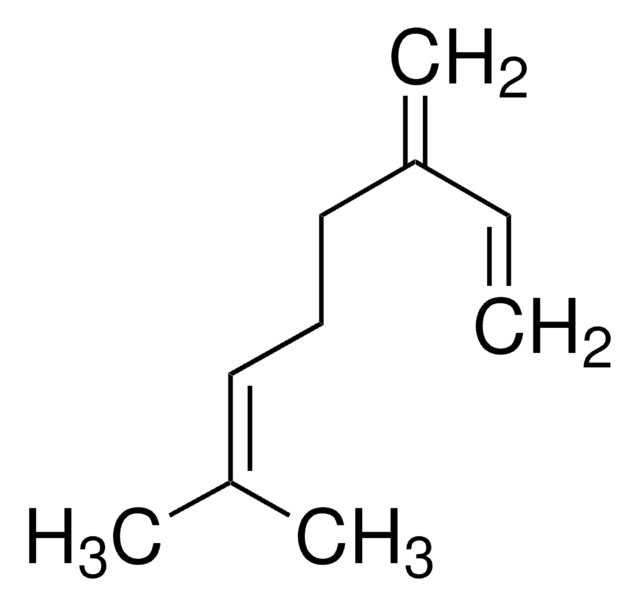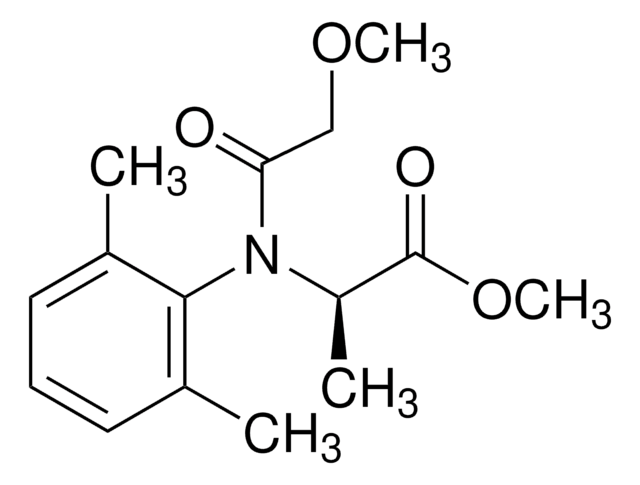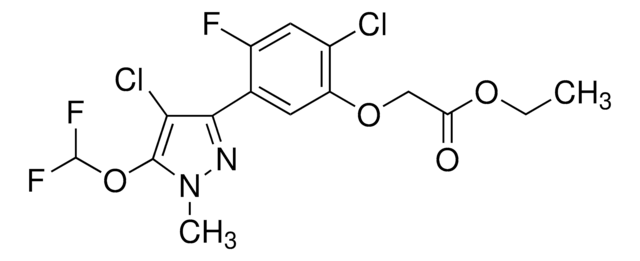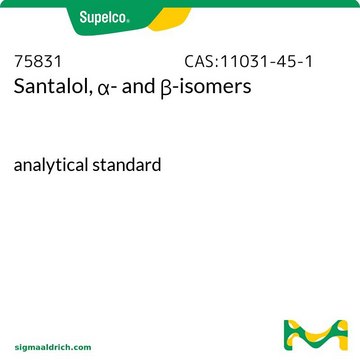50949
Nerol
analytical standard
Synonyme(s) :
cis-3,7-Dimethyl-2,6-octadien-1-ol, Nerol
About This Item
Produits recommandés
Qualité
analytical standard
Niveau de qualité
Essai
≥97.0% (GC)
Durée de conservation
limited shelf life, expiry date on the label
Technique(s)
HPLC: suitable
gas chromatography (GC): suitable
Indice de réfraction
n20/D 1.467-1.478
n20/D 1.474 (lit.)
pb
103-105 °C/9 mmHg (lit.)
Densité
0.876 g/mL at 25 °C (lit.)
Application(s)
cleaning products
cosmetics
flavors and fragrances
food and beverages
personal care
Format
neat
Chaîne SMILES
C\C(C)=C\CC\C(C)=C/CO
InChI
1S/C10H18O/c1-9(2)5-4-6-10(3)7-8-11/h5,7,11H,4,6,8H2,1-3H3/b10-7-
Clé InChI
GLZPCOQZEFWAFX-YFHOEESVSA-N
Vous recherchez des produits similaires ? Visite Guide de comparaison des produits
Catégories apparentées
Description générale
Application
- e-cigarette refill solutions by high performance liquid chromatography-tandem mass spectrometry with electrospray ionization (HPLC-ESI-MS/MS) as well as gas chromatography (GC) coupled to MS/MS operating under the electron impact (EI) mode and multiple reaction monitoring (MRM) mode of detection.
- Honeybush tea (Cyclopia spp.) by headspace solid phase microextraction (HS-SPME) and comprehensive two-dimensional gas chromatography (GC x GC) with flame ionization detection (FID) and a single stage modulator.
- Hanzhong black tea (Camellia sinesis) by solid phase extraction (SPE) and GC coupled to MS as well as olfactometry.
- Wine by liquid-liquid extraction (LLE) and EI-GC-MS with selective ion monitoring (SIM) detection.
Mention d'avertissement
Warning
Mentions de danger
Conseils de prudence
Classification des risques
Eye Irrit. 2 - Skin Irrit. 2 - Skin Sens. 1B
Code de la classe de stockage
10 - Combustible liquids
Classe de danger pour l'eau (WGK)
WGK 2
Point d'éclair (°F)
226.0 °F - closed cup
Point d'éclair (°C)
107.78 °C - closed cup
Faites votre choix parmi les versions les plus récentes :
Déjà en possession de ce produit ?
Retrouvez la documentation relative aux produits que vous avez récemment achetés dans la Bibliothèque de documents.
Les clients ont également consulté
Notre équipe de scientifiques dispose d'une expérience dans tous les secteurs de la recherche, notamment en sciences de la vie, science des matériaux, synthèse chimique, chromatographie, analyse et dans de nombreux autres domaines..
Contacter notre Service technique
